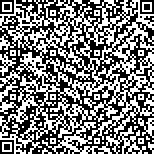| Related citation: | Li Wang,Xiao-Ji Niu,Quan Zhang,Qi-Jin Chen,Wei-Ping Jiang.A Camera/IMU Tightly-Coupled Navigation Algorithm and Verification by Hybrid Simulation[J].Journal of Harbin Institute Of Technology(New Series),2013,20(6):84-90.DOI:10.11916/j.issn.1005-9113.2013.06.012. |
|
| Author Name | Affiliation | | Li Wang | GNSS Research Center, Wuhan University, Wuhan 430079, China | | Xiao-Ji Niu | GNSS Research Center, Wuhan University, Wuhan 430079, China | | Quan Zhang | GNSS Research Center, Wuhan University, Wuhan 430079, China | | Qi-Jin Chen | GNSS Research Center, Wuhan University, Wuhan 430079, China | | Wei-Ping Jiang | GNSS Research Center, Wuhan University, Wuhan 430079, China |
|
| Abstract: |
| GNSS (global navigation satellite systems) are unavailable in challenging environments such as urban canyon and indoor locations due to signal blocking and jamming. Camera/IMU (inertial measurement units) integrated navigation systems can be alternatives to GNSS. In this paper, a tightly coupled Camera/IMU algorithm modeled by IEKF (iterated extended kalman filter) is presented. This tight integration approach uses image generated pixel coordinates to update the Kalman Filter directly. The developed algorithm is verified by a hybrid simulation, i.e. using inertial data from field test to fuse with simulated image feature measurements. The results show that the tight approach is superior to the loose integration when the image measurements are insufficient (i.e. less than three ground control points). |
| Key words: inertial navigation image-aided navigation photogrammetry Kalman filter |
| DOI:10.11916/j.issn.1005-9113.2013.06.012 |
| Clc Number:V249.32 |
| Fund: |






